News
Consider Cage Diving
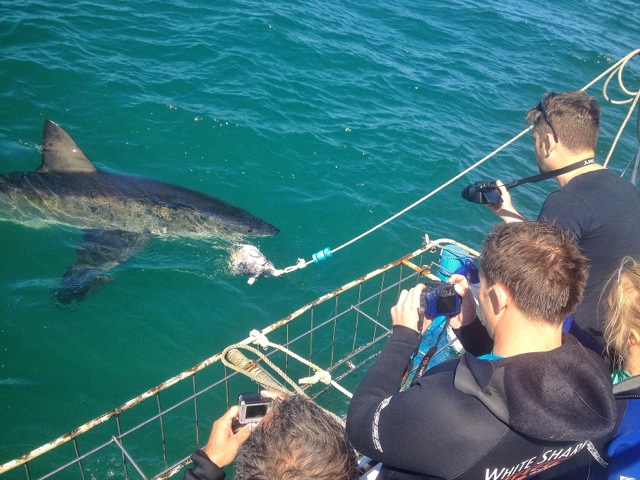
Great white shark cage diving has become a growing industry in areas such as Australia, Mexico, and South Africa. Whether for an interest in sharks, an adrenaline rush, or a spontaneous vacation adventure, thousands of tourists eagerly plunge into cages to experience the great white shark in its natural environment.
Despite the growing industry, there are many controversial issues regarding white shark cage diving and the possible negative effects it may cause the animal. Some believe that sharks are drawn into areas they would not normally be. Others believe that chumming for sharks teaches them to associate boats – and humans – with food. The most controversial issue however must be around ensuring the safety of the sharks during cage diving activities as well as the safety of the divers in the cage. Many people believe that sharks are being purposely led or dragged into the cages to add to the excitement and experience of clients.
On the other hand there are many how believe that cage diving plays an important role towards promoting Shark conservation by raising awareness and trying to change the negative perception people have of these animals.
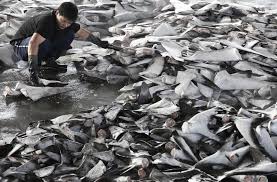 Sharks are being killed worldwide at an unsustainable rate. It is estimated a staggering 100 million sharks die at the hands of humans each year. 70 million of those are thought to be as a result of shark finning. As the shark fin soup industry grows in China, it puts added pressure on fishermen to kill increasing numbers of sharks. In this particular industry, the fins are the focus of interest, leaving no concern for the well-being of the shark once the fins are removed. Often the shark is thrown back into the ocean, unable to swim which leads to death caused either by drowning or by becoming defenceless pray. Aside from the shark finning industry, sport fishing, beach nets, and by-catch are also aiding in diminishing shark numbers across the world. Currently, 90% of shark species are believed to be endangered.
Sharks are being killed worldwide at an unsustainable rate. It is estimated a staggering 100 million sharks die at the hands of humans each year. 70 million of those are thought to be as a result of shark finning. As the shark fin soup industry grows in China, it puts added pressure on fishermen to kill increasing numbers of sharks. In this particular industry, the fins are the focus of interest, leaving no concern for the well-being of the shark once the fins are removed. Often the shark is thrown back into the ocean, unable to swim which leads to death caused either by drowning or by becoming defenceless pray. Aside from the shark finning industry, sport fishing, beach nets, and by-catch are also aiding in diminishing shark numbers across the world. Currently, 90% of shark species are believed to be endangered.
It is a worldwide common misconception that the shark is to be a feared predator. This misunderstanding of the great white shark generates negative perspectives on the animal making support on issues concerning the sharks a challenging matter of contention.
White shark cage diving gives an opportunity for an understanding of the animal through education provided through crew members during the experience on the boat and inside the cage. As the clients see the sharks for themselves, a pre-conceived opinion of a mindless killer can change to that of respect and admiration for an apex predator. If no education or research is being done by white shark cage operators, then it is simply a business, contributing nothing to the protection and conservation to these animals, merely providing tourists with their great underwater photos of a massive shark.
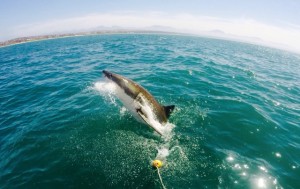 In South Africa, the right to own a cage diving permit is closely coupled with the responsibility to contribute towards conservation and research. A responsible cage diving company will remain within strict permit guidelines and adhere to criteria set by the Governing body. For instance, the bait handler’s job is to entice the sharks as close to the cage as possible, avoiding contact between the shark and the cage or boat. A skilled bait handler is able to keep the bait (usually a tuna head) out of reach, should the shark lunge towards it, but also avoid leading the shark to collide with the cage, which can be extremely difficult in low visibility conditions. If the shark decides to breach on the bait, the handler may not see it until it hits the surface. Throwing the bait out a safe distance from the cage minimizes the risk of the shark hitting or landing on the cage. Of course in this instance, the clients in the cage will see nothing of the shark underwater. It’s also important to remember that every shark behaves differently. Much like people, each have their own personality, making it difficult to predict the movements of a shark around the boat. The bait handlers most geared towards conservation will put shark safety above clients getting their close up.
In South Africa, the right to own a cage diving permit is closely coupled with the responsibility to contribute towards conservation and research. A responsible cage diving company will remain within strict permit guidelines and adhere to criteria set by the Governing body. For instance, the bait handler’s job is to entice the sharks as close to the cage as possible, avoiding contact between the shark and the cage or boat. A skilled bait handler is able to keep the bait (usually a tuna head) out of reach, should the shark lunge towards it, but also avoid leading the shark to collide with the cage, which can be extremely difficult in low visibility conditions. If the shark decides to breach on the bait, the handler may not see it until it hits the surface. Throwing the bait out a safe distance from the cage minimizes the risk of the shark hitting or landing on the cage. Of course in this instance, the clients in the cage will see nothing of the shark underwater. It’s also important to remember that every shark behaves differently. Much like people, each have their own personality, making it difficult to predict the movements of a shark around the boat. The bait handlers most geared towards conservation will put shark safety above clients getting their close up.
Conversing with clients is another important conservation tool that is used by most cage diving companies. With anything between 5-30 clients on a cage diving shark trip, there is a fantastic opportunity here for crew and biologists to be in conversation with clients about the animals they are seeing and the behaviour they are witnessing. Interesting facts conveyed in the right way make the trip educational and fun while helping to change the negative image attached to the sharks. Further information about the area they are in, as well as the food they eat is also important for understanding white shark behaviour. This makes having crew members that are passionate and open to taking with clients essential on the boat.
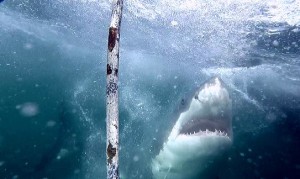 For a responsible operator, client safety is extremely important. At the start of every tour, there is a safety briefing from a member of the crew or in the form of a video presentation. This outlines what the client can expect from the day, and in particular, how to make sure the day is safe for everyone on board. Emergency procedures should be explained in detail and the client should board the boat feeling safe and comfortable with the crew. As part of the safety briefing, clients are warned not to touch the sharks. This may seem like an obvious warning, but there have been many cases of divers wanting to get even closer, pushing their arms and cameras through the cage, leading to injuries caused either by the jaws or a shark’s tough skin. To avoid this most cages are built with an inner rail, for divers to hold on to and push themselves under water as sharks pass by. Those that try and touch sharks are usually removed from the cage.
For a responsible operator, client safety is extremely important. At the start of every tour, there is a safety briefing from a member of the crew or in the form of a video presentation. This outlines what the client can expect from the day, and in particular, how to make sure the day is safe for everyone on board. Emergency procedures should be explained in detail and the client should board the boat feeling safe and comfortable with the crew. As part of the safety briefing, clients are warned not to touch the sharks. This may seem like an obvious warning, but there have been many cases of divers wanting to get even closer, pushing their arms and cameras through the cage, leading to injuries caused either by the jaws or a shark’s tough skin. To avoid this most cages are built with an inner rail, for divers to hold on to and push themselves under water as sharks pass by. Those that try and touch sharks are usually removed from the cage.
In the case of bad weather conditions, trips are usually cancelled. Should a trip go ahead in poor conditions, the experience in the shark cage can be very unpleasant. If an operator goes out in poor conditions, it shows more of a focus on business than shark conservation.
In order to save sharks from extinction it is important for clients who seek the cage diving experience to be given the opportunity to see not only how sharks behave in the wild, but also factual information given by passionate crew members. This type of mindset spreading throughout the world gives a chance for positive outlooks and attitudes towards the sharks.
To find out more about Shark Conservation opportunities and how you can make a difference visit www.wsaecoprogram.co.za.
[youtube id=”0qDVgRs5ZIs” width=”100%” height=”400px”]
Blogs
Wrecks’ Curse – The World of Wreck Diving
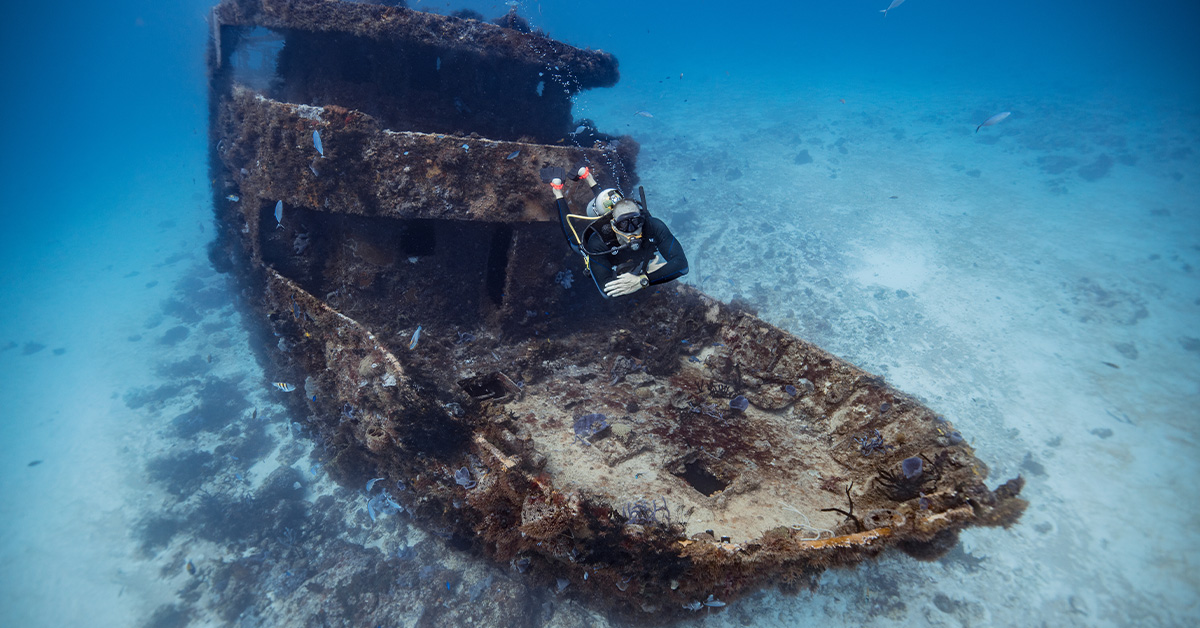
By Pablo Mir
We all enjoy those unexpected encounters that come with wreck diving, no matter how small, during our open water scuba dives. Exploring those nearly vanished remains of a ship scattered across the ocean floor is frequently the climax of the otherwise regular dive.
What is Wreck Diving?
Wreck diving involves exploring underwater shipwrecks while scuba diving. Sometimes, the wreck we encounter is more than just the remnants of a small and forgotten old vessel. Or perhaps we didn’t deliberately choose it, but the charter we boarded had that destination planned that day. The Benwood, less than 14 meters or 45 feet deep, in the clear waters of the National Marine Sanctuary in Key Largo, Florida, or the Copenhagen of Fort Lauderdale, also Florida, are good examples. Divers, many beginners who haven’t even devoted half a second to thinking about wreck diving, enjoy exploring their remains and the fauna that inhabit them. In some way, and at different levels, we all seem to potentially be wreck divers, even without a higher and explicit intention.
First Encounters: The Unplanned Dive into Wreck Exploration
But the trek is long and has many branches. Wrecks present themselves in vast possibilities, from shallow and clear waters to deep and dark ones. The Ancient Mariner, Captain Dan, U352, Great Isaac, Grecian, Lady Luck, Hyde, Aeolus, Hydro Atlantic, RBJ & CC, Algol, U869, and the Andrea Doria -the Grand Dame of the Sea- are some of the names that resonate among thousands in the minds of many wreck divers on the East Coast of the USA. For many of us, getting ready to traverse that path of increasing challenges, increasingly demanding environments, and more astonishing, transcendent dives is a life goal in terms of recreation.
A Diverse World: The Spectrum of Wreck Diving Experiences
Now, it is well known that the label of wreck diving is not only applied to shipwrecks. It is common to extend it to any artificial structure or piece of it that can be explored during our dives. For example, Texas Tower #4, an Air Force radar station off the coast of New Jersey, toppled in 1961 by a storm, is frequently visited by numerous local technical divers and visitors who want to test their skills in those demanding waters. Similar structures of different natures and purposes exist in many other places, with the most different levels of certification and experience requirements we can imagine.
Is Wreck Diving Dangerous?
Wreck diving is not inherently dangerous, but proper training is required. Describing with words the feeling of wonder and the adventure involved in wreck diving is not easy. In the same way that regular open water diving is the entry point to another world, a unique, fascinating world, wreck diving is also an entry point to one of the additional levels of enjoyment and fascination the world of recreational diving poses. Wreck diving, we live the adventures others just dream or fear. We are there, explorers of a distant land. Often, we witness the remains of real human tragedies; other times, we are visitors to the most wonderful amusement park we can imagine.
Learning Curve: The Path from Novice to Experienced Wreck Diver
Sometimes, watching groups of recreational divers exploring a wreck might seem like witnessing a scene from a pirate movie. Two or three divers here, two or three more there, ascending and descending along its sides, from bow to stern, sticking their heads in to look inside compartments and passages. In some cases, entering and exiting the bridge or any space allows penetration in areas with abundant natural light and generous access points. Their expressions and body language make it easy to notice that they are having a great time. There is no doubt they are enjoying it, and it will be an experience they will vividly remember.
If they are a group traveling together, an instructor or divemaster may be there to ensure everything goes well. The passion for exploration, for discovery, and that thirst for adventures we all have within us can sometimes hinder us in making our best decisions. Therefore, to become actual wreck divers, we must not only desire to do so but also have the will to learn and gain experience, slowly and safely, in everything this specialty implies. While it is true that exploring the exterior of a wreck may seem like something that doesn’t require specific training, the reality is that it does. Fishing lines, sharp surfaces, parts that can easily come off, suddenly disappearing visibility, disorientation, etc., are dangers we must have learned about, developed strategies to avoid, and implemented procedures to solve with the proper tools.
And so it will be; many will traverse the paths of wreck diving by starting with proper training. Sometimes, the first step is part of the regular advanced diver certification many divers take; other times, it is going straight for a wreck diving specialty. They will learn and start practicing, gaining experience and ease in their procedures. They will fall more and more in love with those twisted iron environments and proudly display the rust stains on their diving suits as if they were scars from a well-fought battle.
Deepening the Dive: Advanced Wreck Exploration Techniques
But the journey continues. Sooner or later, some will want more than just hovering around the wrecks. Crossing well-lit passages with the exit in sight will no longer be enough for them. What they recently may have told themselves they wouldn’t do will begin to intrigue them, and they will want to continue training “just in case.” They will want to start moving away from those open corridors and see with their own eyes what lies beyond. They will no longer see wrecks as enemies to overwhelm in large groups but as a mystery to unravel slowly, passage by passage, room by room. They will split into small groups. They pursue a specific goal, have a specific plan, and seek to minimize unexpected situations, and this is more controllable and achievable when done by two or three rather than four or five.
They will keep learning, venture through narrow passages, dodge cables and pieces of metal hanging from what is now the ceiling, and proceed cautiously to avoid stirring up sediments. They will use different methods to establish positions at crossroads, place strobe lights, carry multiple penetration reels, and carry substantial knives, the kind they used to laugh at not long ago, thinking they were unnecessary exaggerations.
The Wreck Diver’s Journey: A Path of Endless Discovery
Over time, they will penetrate deeper and deeper into larger, darker, gloomier, more frightening wreck structures, simply because they can. They will descend to greater depths because that’s where they are in better condition and farther away from the boarding hordes.
They will transition from Air to Nitrox, later return to Air, and later delve into the world of Trimix. They will start planning and executing dives with decompression stops, as otherwise, their bottom times will be insufficient for their intentions. From one decompression gas cylinder, they will move to two, and in some cases, three or more. Those who can afford it will buy rebreathers; those who can’t will stick to open circuit, carrying multiple large cylinders.
The Eternal Call of the Deep
But genuine amazement will hit them hard on the day they, thinking carefully about all the steps they have taken and accounting for the time and effort dedicated, conclude without a shadow of a doubt that it was worth it. It will be too late for them; they will have fallen victim to this curse of shipwrecks that has trapped so many. There will be no escape for them; from now on, they will be wreck divers without cure or remedy. They will be condemned to spend the rest of their vacations and days off among twisted irons at the bottom of rivers, lakes, and oceans. Cheers buddies! And a warm welcome to all those newcomers to recreational diving who, unknowingly, may be destined to wander among old wood and rusted metal, seeking to put out that thirst for real-life adventures.
To find out more about International Training, visit www.tdisdi.com.
Main Image: William Drumm/International Training
Blogs
Seal Encounter Dives at Lundy Island
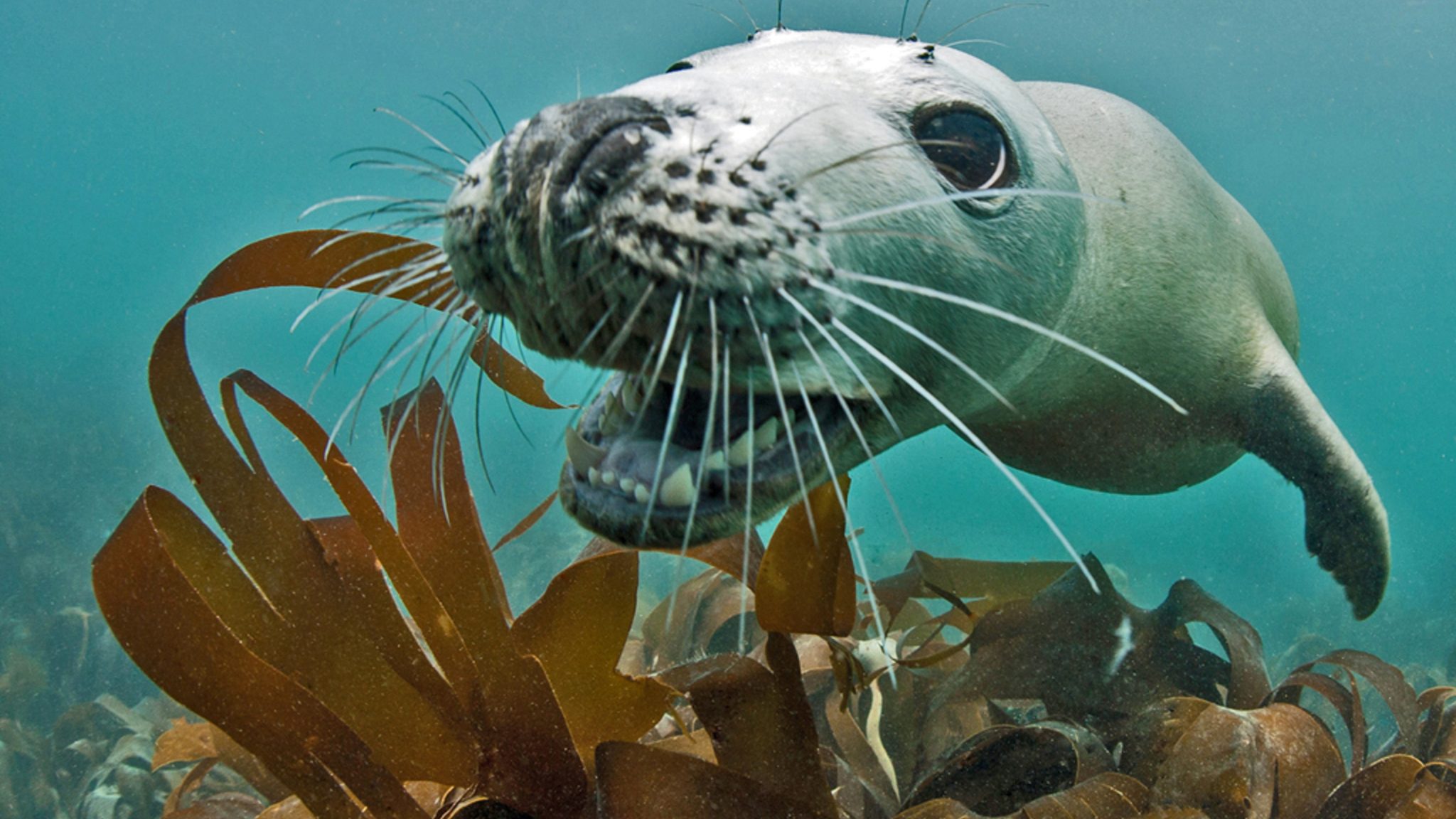
Voted No. 3 on the Top 10 Ultimate British Isles Bucket List by The Independent, these dives offer the closest marine mammal encounter available to divers in the UK. Friendly and playful, respectful divers are often rewarded by incredible interaction with the Lundy Seals.
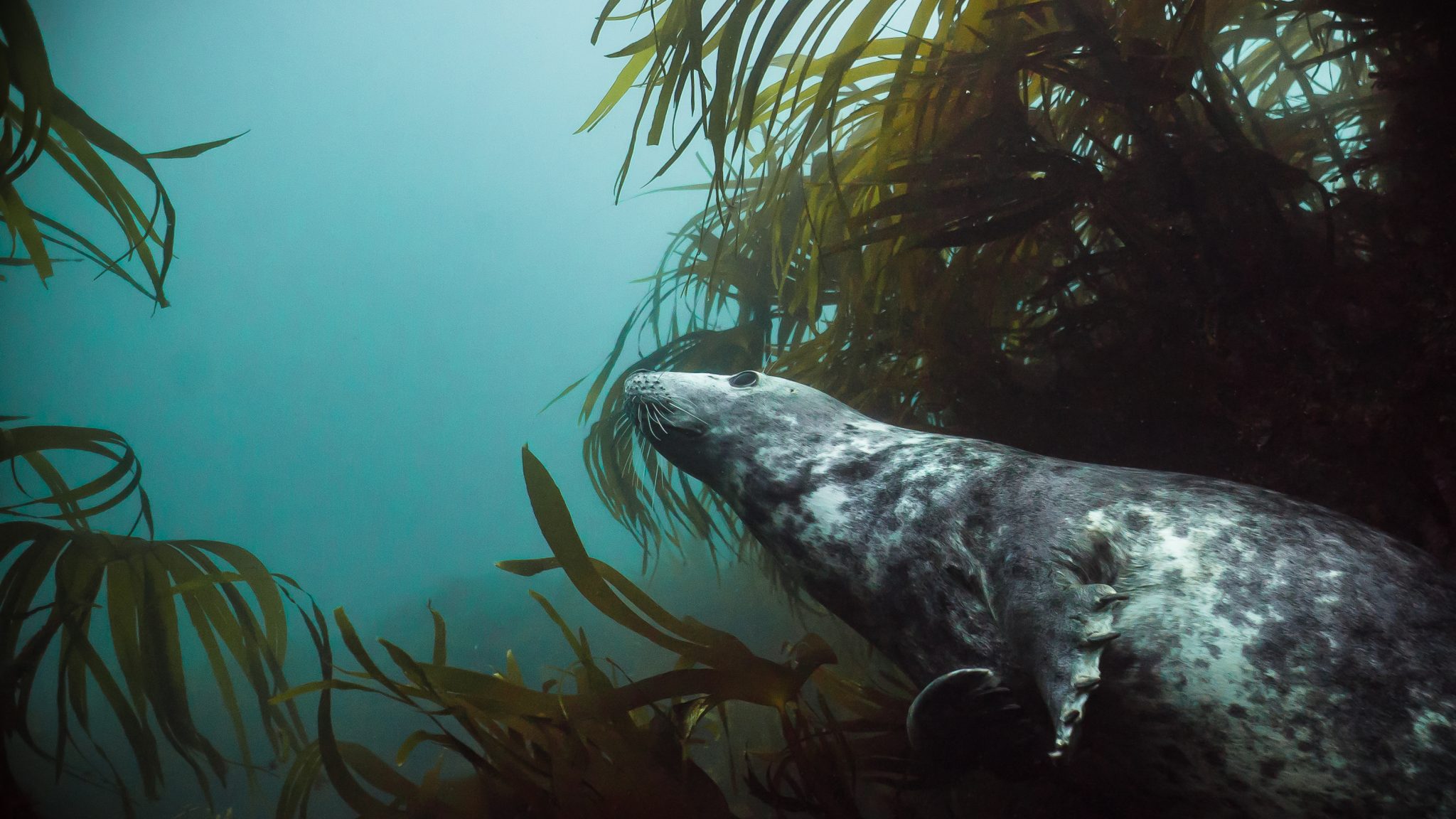
Easy Divers has been running guided dive trips to Lundy for nearly 10 years and offers dive equipment hire if required. Trips depart from the stunning harbour town of Ilfracombe in North Devon and Dolphins are often seen during the boat passage.
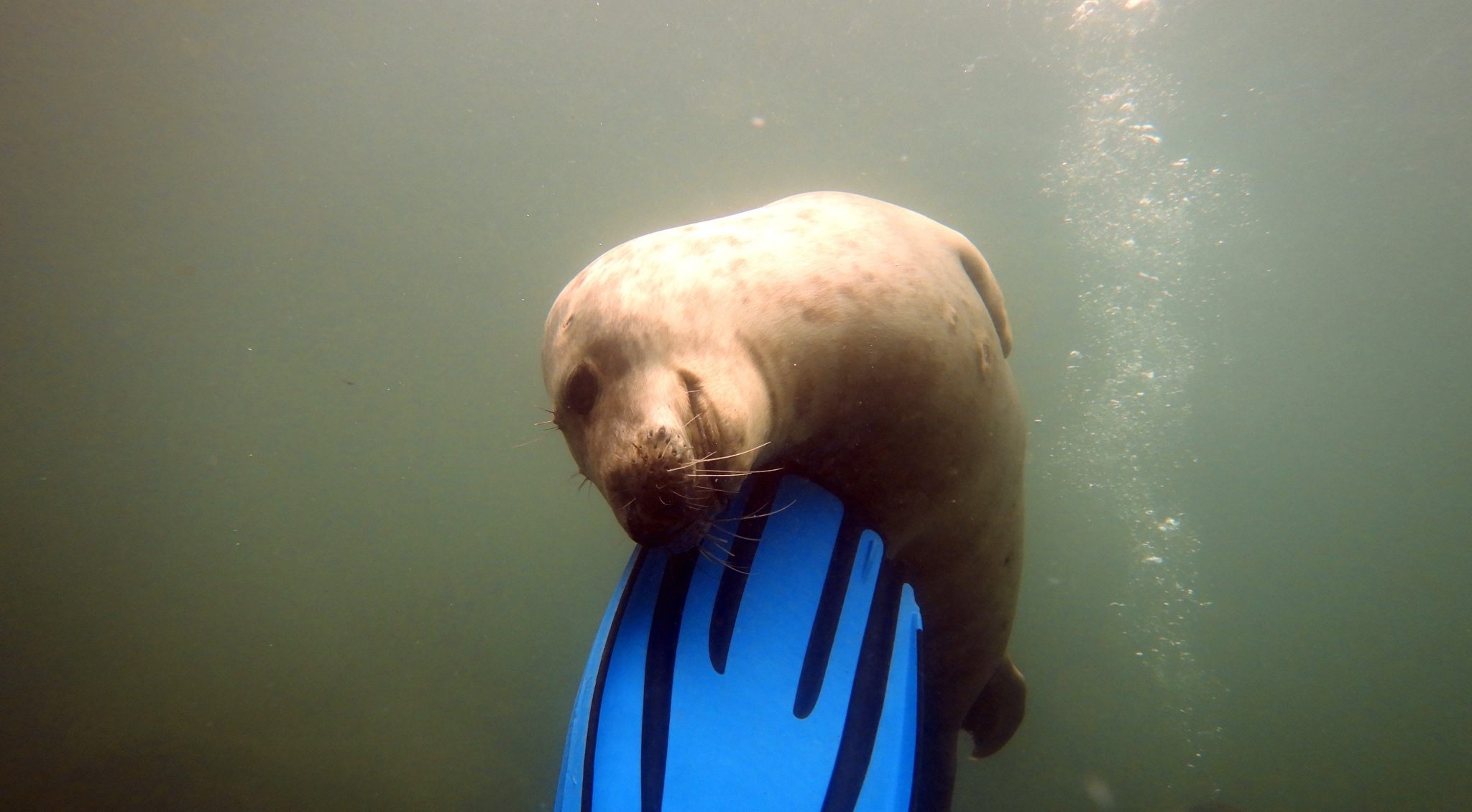
In addition to diving, Ilfracombe is a great base from which to hike the South West Coast Path, dip into surfing at the UK’s first World Surf reserve, enjoy other water sports or head to Exmoor National Park.
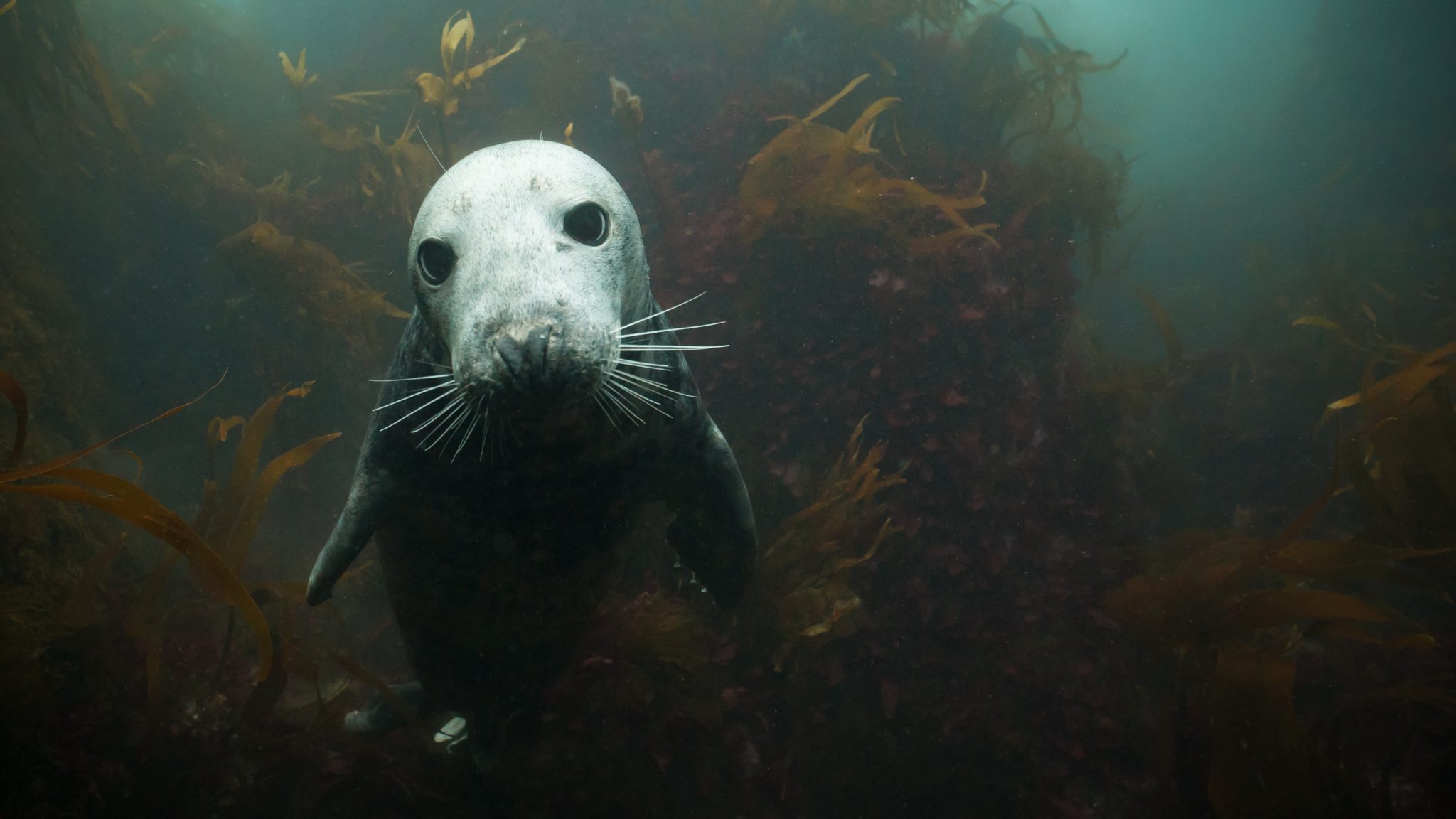
Easy Divers also runs a diver-friendly guest house, with a discount for diving customers and kit rinsing and drying facilities.
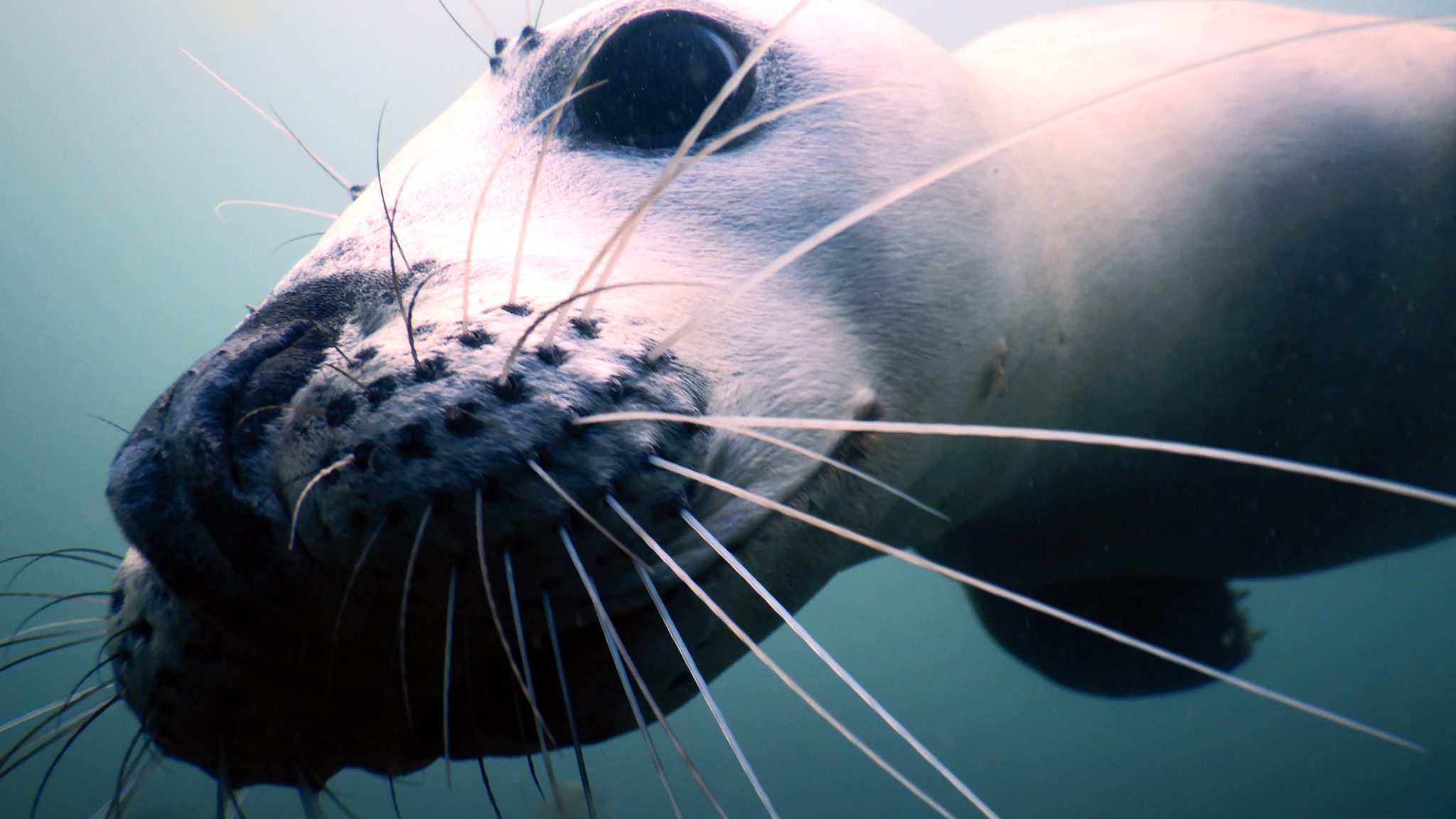
The Seal encounter dive sites are shallow and sheltered and are suitable for divers of all levels, making them a great introduction to British diving.
Exclusive Offer for Scubaverse Subscribers
Use your exclusive Scubaverse discount code scubaverse10% before the end of June and join us for a Seal encounter dive trip to Lundy Island, on any trip date with availability this Summer. Visit https://www.easydiversnorthdevon.co.uk/lundy-dive-trips/seal-encounter-dive-trips/ and enter code scubaverse10% at the on-line check out.
Trips book out well ahead, so book now to avoid disappointment. To save 10% on any 1 night stay at our guest house, please call 07833 020424. We offer free cancellation for divers who book a 1 night stay, if we have to re-schedule due to unsafe weather.
Join us for Britain’s best marine mammal diving experience!
Trips run from end of May to mid-October and are bookable via email at info@easydiversnorthdevon.co.uk, on-line via the Easy Divers website, www.easydiversnorthdevon.co.uk, or call 07833 020424 for more info
-

 Gear Reviews4 weeks ago
Gear Reviews4 weeks agoGEAR REVIEW – Revolutionising Diving Comfort: The Sharkskin T2 Chillproof Suit
-

 Marine Life & Conservation Blogs3 months ago
Marine Life & Conservation Blogs3 months agoCreature Feature: Swell Sharks
-

 Blogs2 months ago
Blogs2 months agoMurex Resorts: Passport to Paradise!
-

 Blogs3 months ago
Blogs3 months agoDiver Discovering Whale Skeletons Beneath Ice Judged World’s Best Underwater Photograph
-

 News3 months ago
News3 months agoPADI Teams Up with Wellness Brand Neuro to Drive Ocean Change and Create a Blue State of Mind
-

 Marine Life & Conservation3 months ago
Marine Life & Conservation3 months agoSave the Manatee Club launches brand new webcams at Silver Springs State Park, Florida
-

 Blogs2 months ago
Blogs2 months agoSeagrass Awareness Month brings critical food source for Manatees to centre stage
-

 Blogs3 weeks ago
Blogs3 weeks agoDive Indonesia Part 3: Dive into Lembeh Trip Report
















